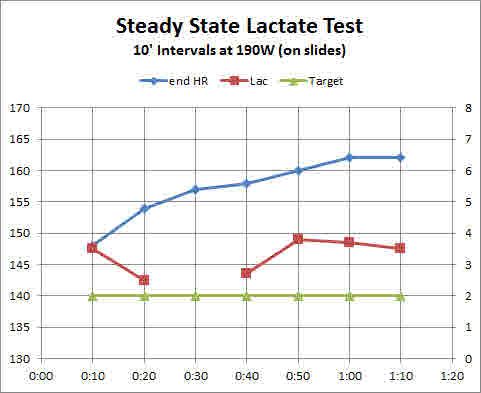In a heart rate based training, yes. The athlete than usually tries to compensate it, by reducing pace. And becomes slower and slower. But… heart rate shift happens only to a certain degree. The first hour(s) the heart rate shifts more, but after this it shifts significantly less and remains more or less constant.gregsmith01748 wrote:Since UT2 is a HR band definition, and HR tends to rise throughout a session, it is hard to stay that low.
In a lactate based training the heart rate shift is not relevant. Pure UT2 is defined by the highest possible power where lactate does rise up significantly over "base lactate level" (which is usually about 0.8-1.6mmol, depending on your physique/nutrition/lifestyle). Properly determined lactate level remains constant even after hours.
For rowing the "general recommendation" is about 1.5mmol for UT2 (e.g. for running about 1.3mmol and for biking 1.1-1.3mmol.)
With 2mmol you already left 100% fat energy supply and I suspect you already use significant (50-60%) amounts of additional "carb energy supply". That limits the session duration and the benefit of UT2 training. UT2 with 100% fat gives a very low pace and can be quite boring slow.
I personally try to pace at up to 80/20 (once a while on bad days I go up to 60/40). For me this is fast enough not to be boring and I can do long sessions – at the end I'm still of power to able to do an interval like 3x5min.
Sometimes it's good to do at the beginning of UT2 session a 5min intervall to loose some energy and to to fight during the hole session.
For me it was hard, after years of using the heart rate monitoring/zones as reference, to switch to a strict lactate based training. The first few weeks I felt very naked and "shaky", was so much of doubt. But I made progress which I haven't made before.
To measure exactly the energy supply level a mobile spiroergometry (it's incredible expensive and for private use not affordable



 [/url]
[/url]
